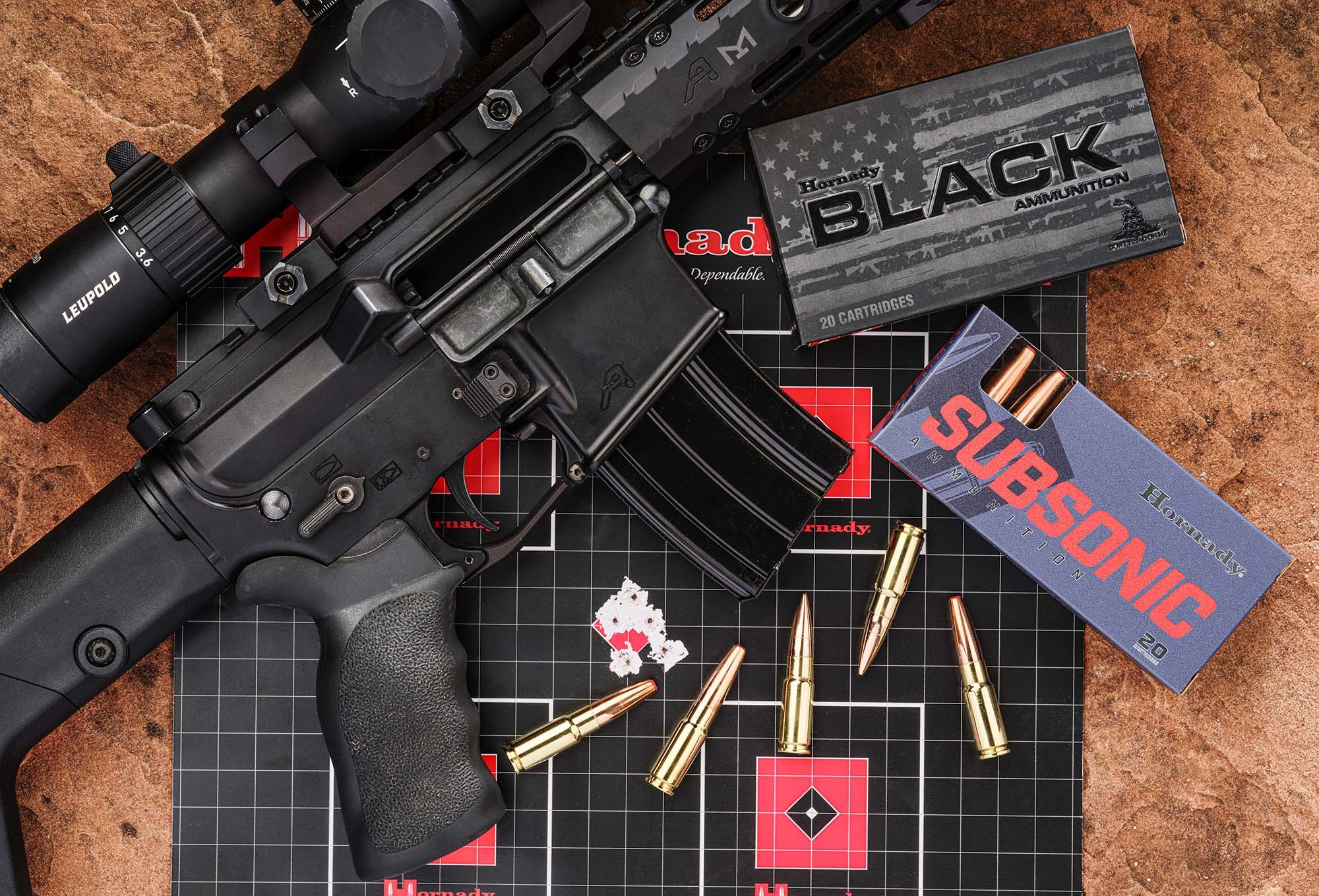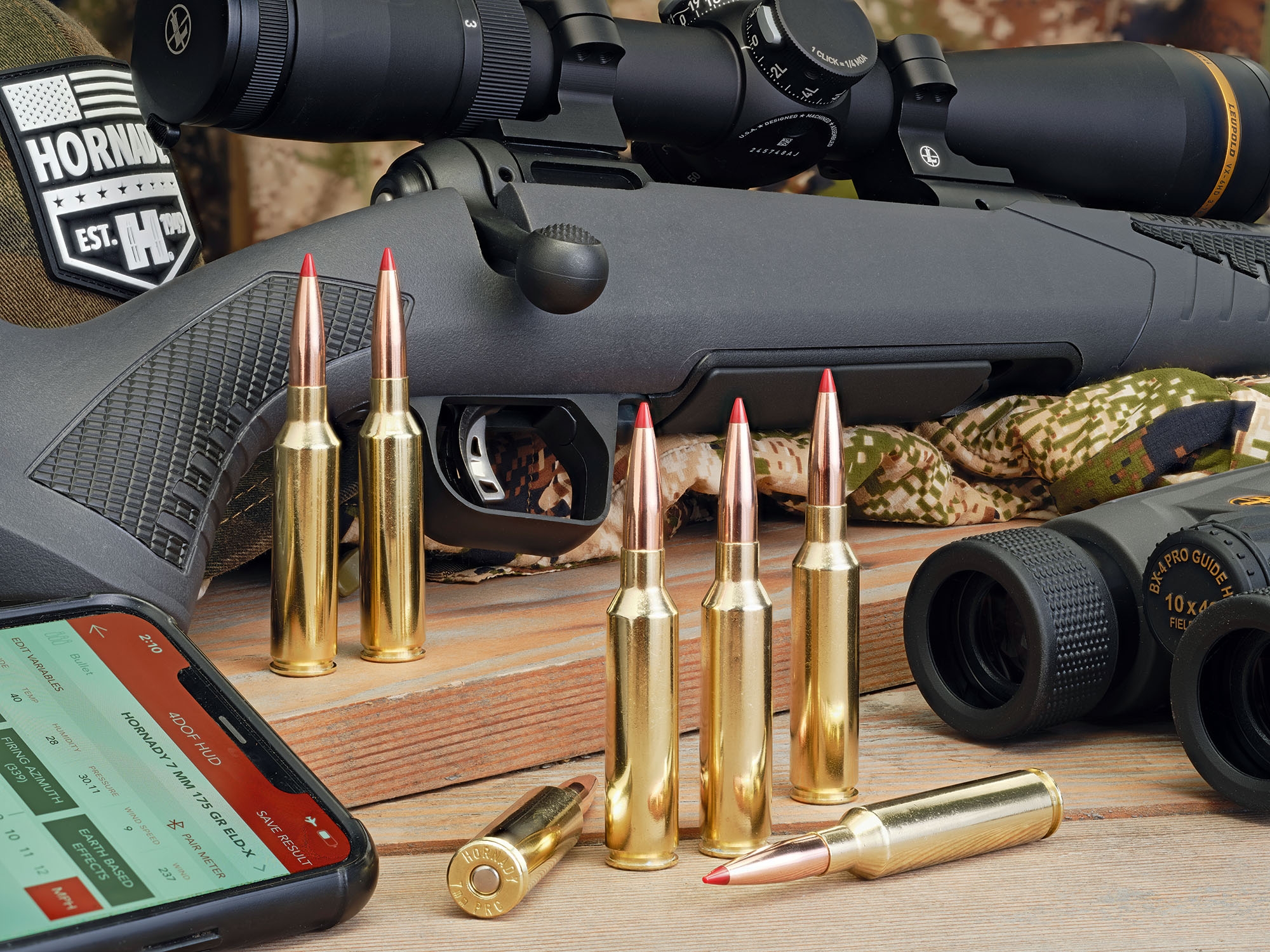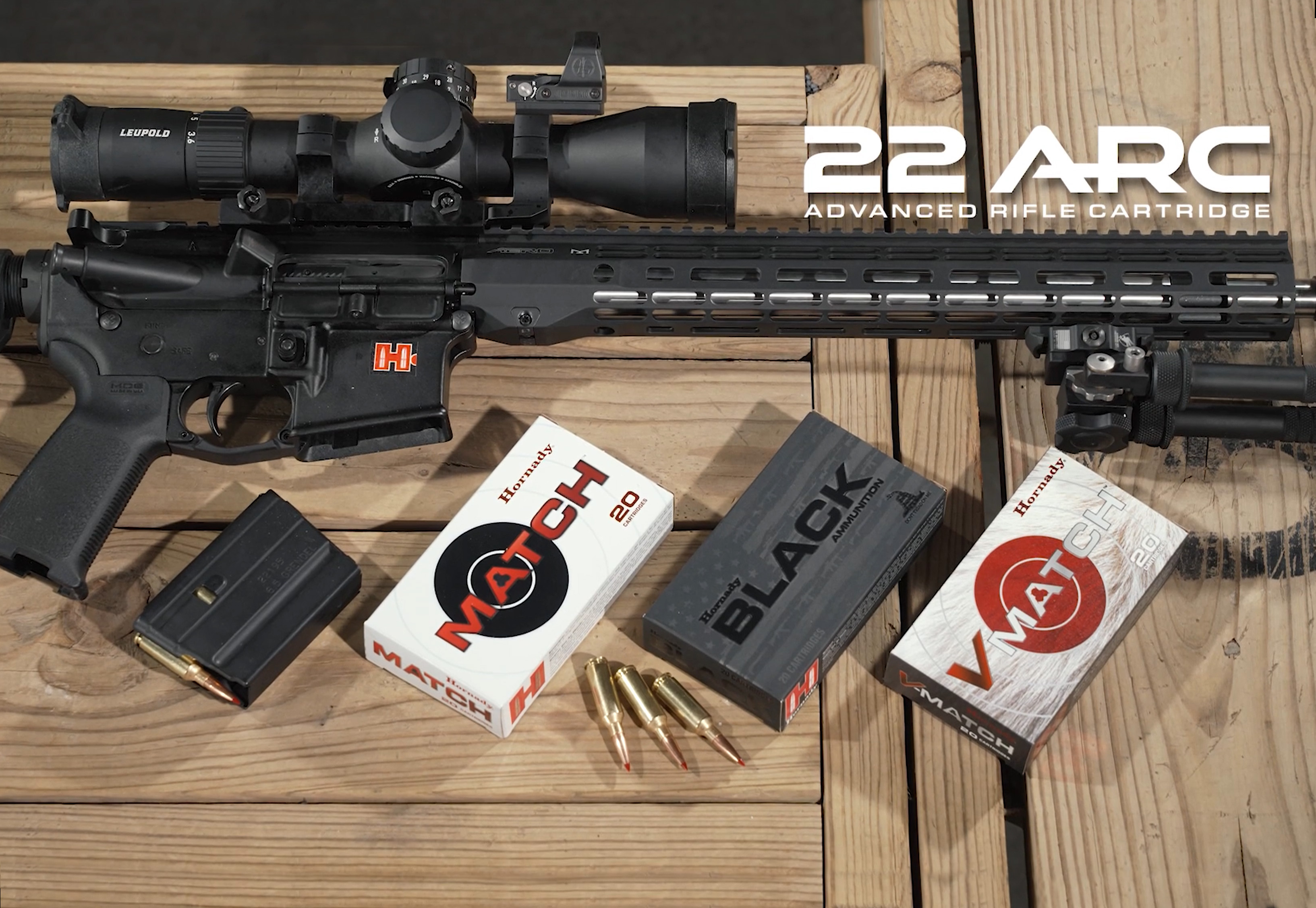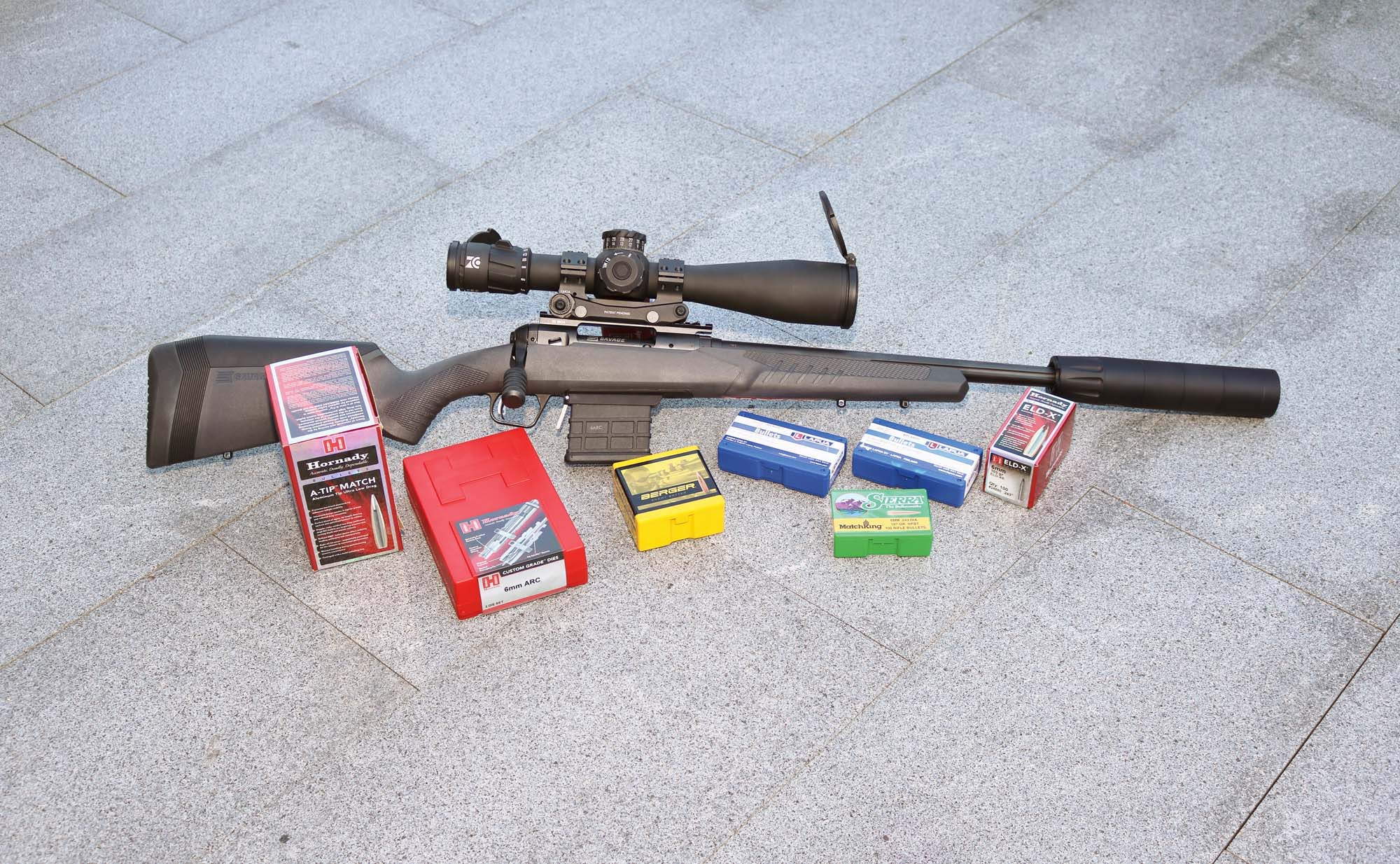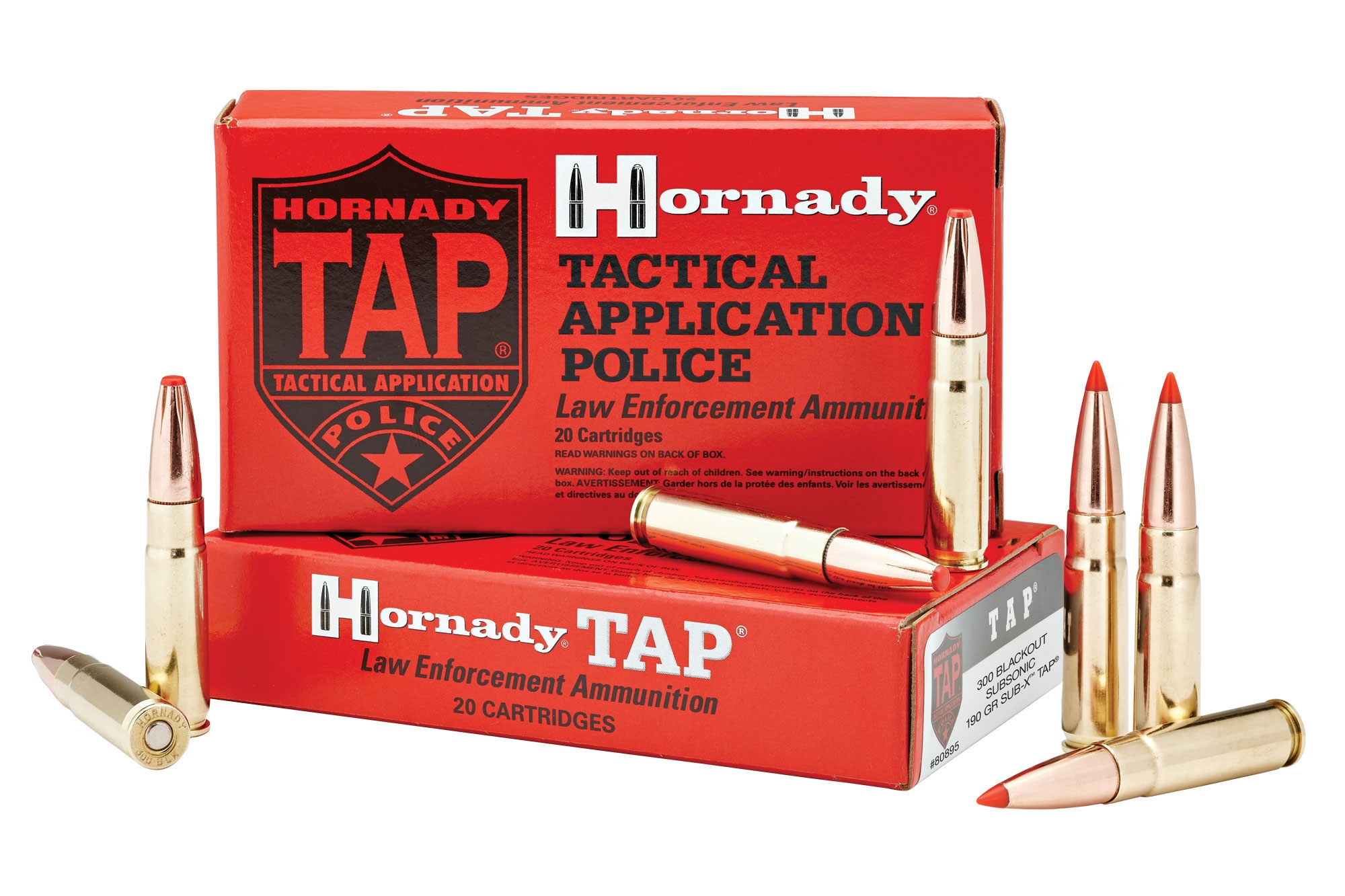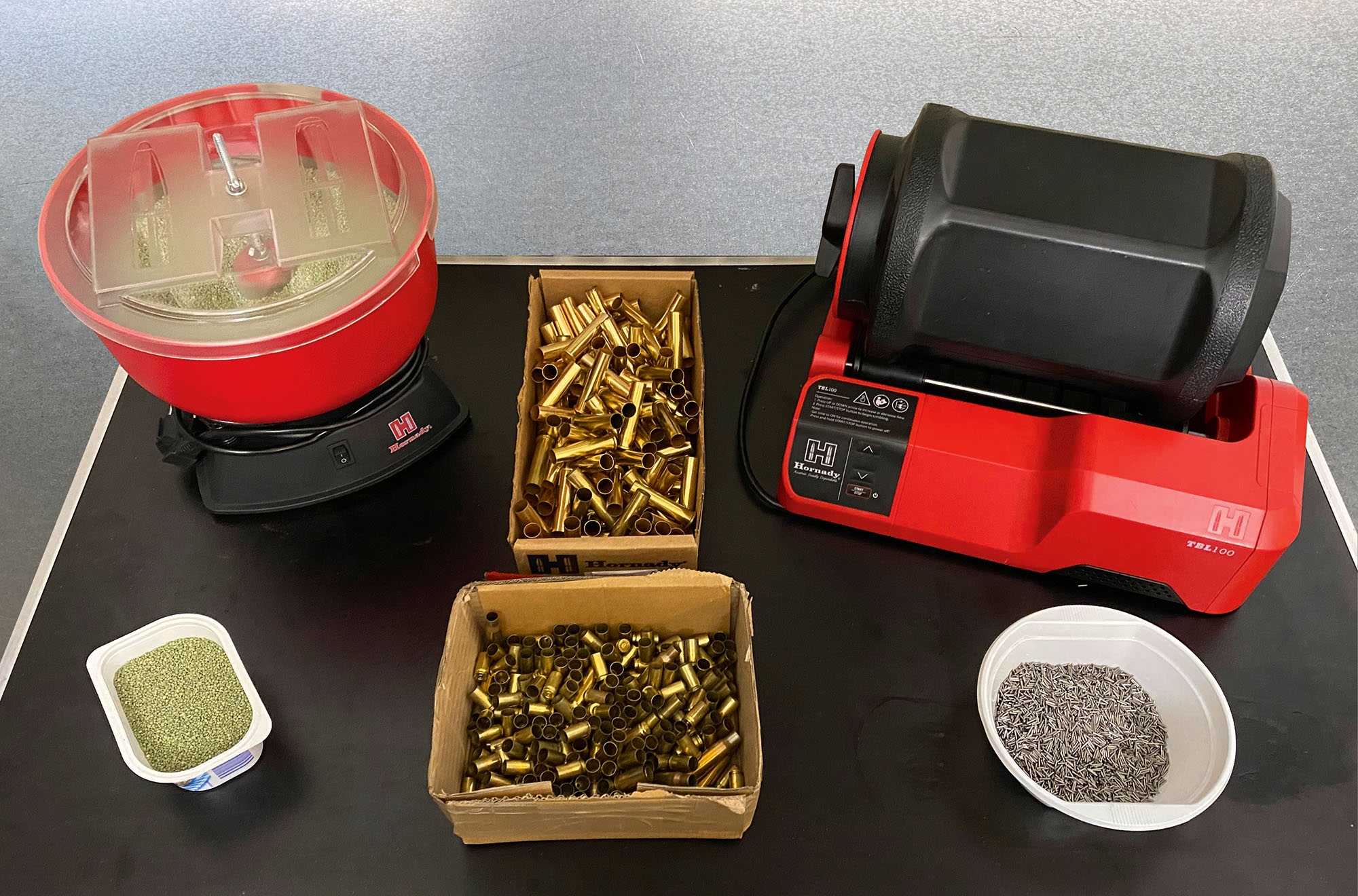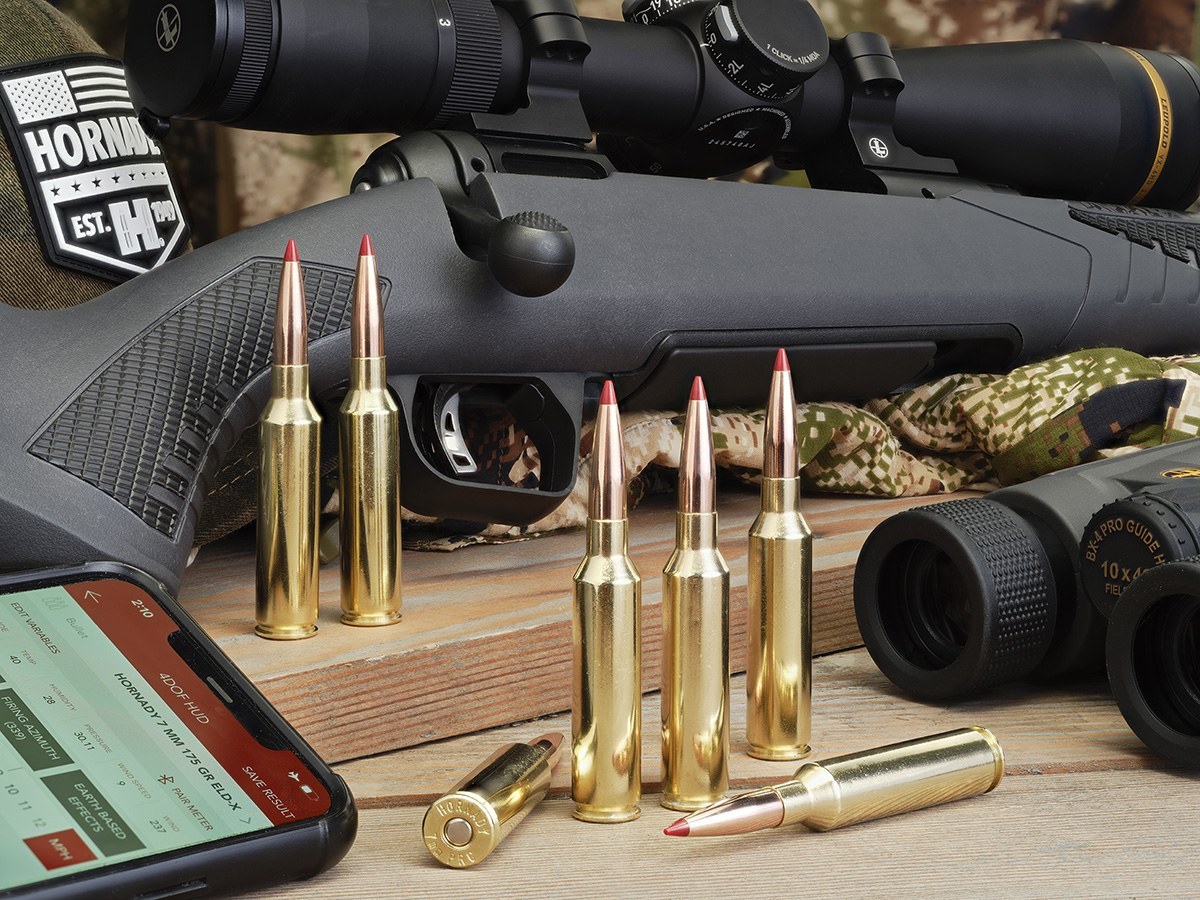Even cheap, small ultrasonic tanks clean the case from the inside much better than dry tumblers with ground walnut shell media, according to our initial findings from a short test. Previously fired cases also were free from much of the black crud in the primer pockets. However, no matter how well "buoyant water molecules" detached the hard residue, something usually stuck. Several cycles had to be run for residue-free cleaning. Also, apart from a splash of dishwashing soap, no cleaning agent was added. On the outside, almost nothing happened visually – "neatly clean" is different. But a fur of residues of the cleaning agent, which appears (or remains) inside during dry cleaning with walnut shell media, was found just as little as coarse slag residues. Small stainless steel pins in a cleaning fluid, on the other hand, are said to provide bright brass on the outside as well as the inside, so cleaning detergents are added. Cleaning detergents are also found in a household appliance that is available everywhere, namely washing machine detergent. This process also has its supporters – but now let's take it one step at a time.
Looking for cheap cleaning agents for STROBL.CZ Lyman and Hornady wet cleaning equipment
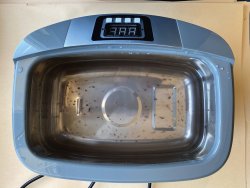
The chemistry must be right: as much as necessary, as little as possible. Acids work in a steady-state equilibrium between duration of action and pH value. Simplified: strong acid acts in a short period of time just as weak acid acts over a longer period of time. The time intervals in which the acid acts on dirt are therefore short or long. Only when there is no more dirt, the acid continues to act, namely on the cleaned material. Weak acid allows a longer time window to accurately time the point at which the cases are ready. Regardless of whether strong or weak acid is used, it is necessary to neutralize after cleaning, i.e. to stop the effect of the acid on brass.
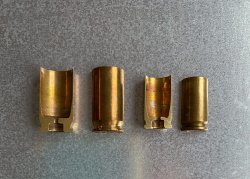
"That's what the colleague who always brags about his math-physics-chemistry A-level does, he can do that"! No, he couldn't. At least not right away. So the first batch of cases, which had been cleaned in acid solution, still showed heavy stains after the supposed neutralization and drying. The mistake, recognized after longer thinking, was a liquid soap with neutral pH. To neutralize the acid residues, however, a basic solution is needed whose pH value should be above the neutral value of 7.0.
All right, second try. But after this one, the cases showed even uglier stains! Because, as it turned out after this time longer research, wool or silk detergents are acidic – in the dissolved state during the washing process, with a pH value of about 5.0. Third attempt: again acidic cleaned brass came directly from the sieve into the 10 liter bucket filled with soapy water. And a good tablespoon of "normal" Persil, dissolved in lukewarm water, finally allowed the third batch of acid-cleaned cases to dry spotlessly. And that's why these cases, in .45 ACP caliber, were also allowed in the lead picture. Only alkaline detergents for vegetable materials such as cotton, linen or synthetic fibers are suitable for neutralizing acidic residues. Detergents for animal fibers, such as wool or silk, are usually acidic. Thus, these would theoretically be more suitable for cleaning, but counterproductive for neutralizing. Intermediate conclusion: proper laundry washing is not so simple.
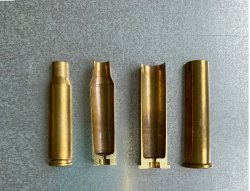
But what? How much? And also for how long? Since citric acid is found in cleaning recommendations for ornamental and household brass objects, the question of "what" was clarified quite quickly.
Prefabricated cleaning agents for wet case cleaning were not available, so the testers concentrated on the active ingredient present in almost all detergents: citric acid. Some suppliers offer a kilogram in powder form for around 13 euros. Others sell a little less – enough to try – in smaller portion bags, five pieces for one euro.
The question about "how much" was hotly discussed among the editorial staff, however. Only if more precisely formulated the question found agreement: how much for which result? Let's remember the reloaders who don't clean at all. So go, albeit at the risk of bringing foreign bodies like sand into the barrel. So something in between, or sort of: all residue removed and, in the majority's opinion, sufficiently clean.
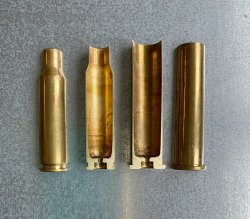
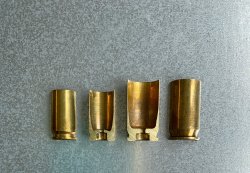
Because "clean" is also in the eye of the beholder. One is already satisfied with somewhat stained, still discolored cases, while another can only accept highly polished brass.
In the first part, the testers noticed very differently soiled cases. Both the pressure during firing, as well as the quantity and type of propellant used, but also the primers play a role in the quantity and stubbornness of residue. The .45 ACP cases that were reloaded several times were particularly dirty. So if you're going to go with chemistry, you'll have to find a lowest common denominator for cases with varying degrees of dirt. Or accept an attack, albeit extremely mild, of the acid on already clean cases. The tests ran with a 5 g bag each of powdered citric acid from the household supply or drugstore, both in the Lyman ultrasonic tank provided by STROBL.CZ and in the Hornady wet tumbler.
The amount in the bag corresponds to about one tablespoon of citric acid. This amount was sufficient in the test for a satisfactory result after one hour each in the wet tumbler with polishing pins, or similarly 3 x 20 minutes in the ultrasonic bath. The cleaning success in the case interior was largely the same with both methods, one can speak of the famous 95% result compared to brand-new cases. But the degree of cleanliness could be checked by anyone at will, either by time, or with a second acid bag. If one cleans about 400 .45 ACP cases in the Hornady tumbler, a kilogram of citric acid will last for about 200 cleanings, or about 80,000 cases. A reduction of steel pins and liquid allows for an even higher number of cases.
The Lyman Turbo Sonic 2500 from STROBL.CZ cleans the brass not only thoroughly, but also very quietly
The ultrasonic cleaner used in the test, the Lyman Turbo Sonic 2500, also packs similar quantities. The dull rattling of the Hornady tumbler disturbed us during operation. The ultrasonic cleaner only emitted a discreet buzzing and quiet ringing during cleaning. Its optional heater can speed up the chemical process. In the absence of a heater, however, filling the Hornady tumbler with hot water at around 60° Celsius is enough. So some leeway between the cleaning success, the pH value, the duration and the heat of the solution.
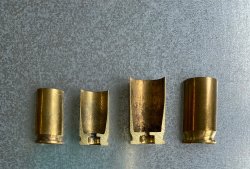
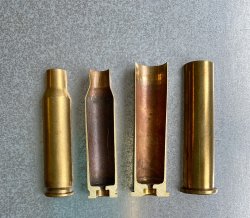
Every household has a washing machine. What is still missing for cleaning brass is an old undershirt with enough fabric to knot, or a pillowcase. However, this should feature a zipper instead of buttons. The rest of this test consisted of a normal amount of full detergent and a 90° degree wash. After about two hours, the laundry was ready. The pillowcase, now noticeably darker on the inside, could stay in the machine for the next wash right away. On average, however, the handgun cases were surprisingly clean on the inside. Rifle cases still showed some color, but no easily soluble residues. While the handgun brass ranked between the dry-cleaned and the acid-wet-cleaned cases in the comparison, rifle cases showed approximately the same level as the dry cleaning. This was also true for the residue in the primer pockets. However, all wet-cleaned cases had one thing in common: they had to be dried. If you have time, lay them on an old towel for a few days with good ventilation. In between, pile them up, but always make sure to avoid upright cases. Lying horizontally, no deep water residues will form. Drying test: pour a pinch of table salt into a few randomly selected cases and wait half an hour. If the salt trickles out afterwards in the same way as it trickled in, the cases are really dry inside. Impatient people need a drying device, or an oven, about an hour at about 60 ° C. Important: Set to convection, not top/bottom heat.
Our conclusion on the Lyman Turbo Sonic from STROBL.CZ and the Hornady case cleaners (TBL 100)
The "old school" manual cleaning of a few cases requires a rag, chrome polish, a small bottle brush and a suitably filed screwdriver for the primers. Up to 100 cases can be cleaned quite neatly in a passable amount of time. One by one. Wet cleaning with home remedies requires an old pillowcase, a few hundred cases plus a cup of Persil, then off to a 90° wash. Works quite passably, depending on the machine and the degree of soiling. Cost: that of a boil wash. Otherwise, it can only be concluded that wet cleaning is clearly superior to dry cleaning, but requires more effort.
Let's move on to the two devices tested: how far the effort goes – or how much extra effort for case cleaning – is determined less by technical than by optical reasons. After all, there is still the fraction of cleaning refusers, whose guns also work with dirty cartridges. In between lies the famous wide field, in which with amazingly little effort the used cases can be cleaned from acceptable looking to almost new condition. The two devices from Hornady and Lyman work well and are reasonably priced at under €250 (Lyman) and around €320 (Hornady TBL). Not everyone wants to have brass and bullet residues in the washing machine at home...
Click here for the first part of our test: cleaning methods with the Hornady M-1 with tumbling media and Hornady Rotary TBL 100 ultrasonic unit with steel pins.



